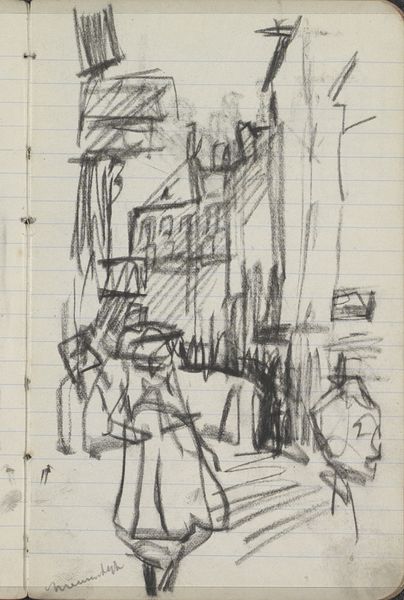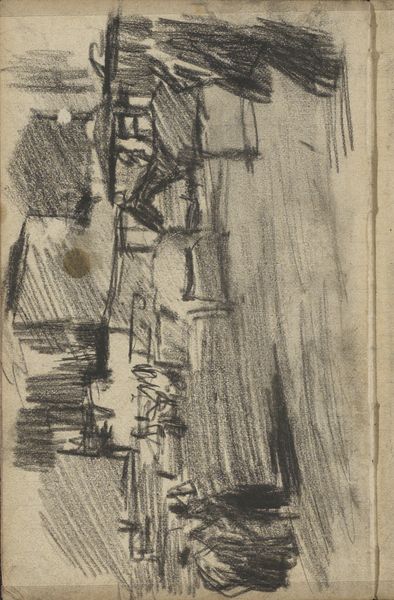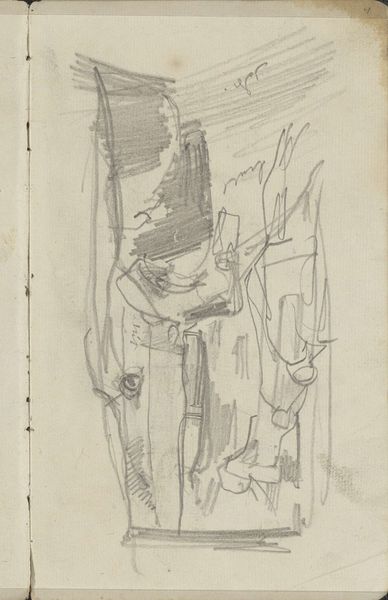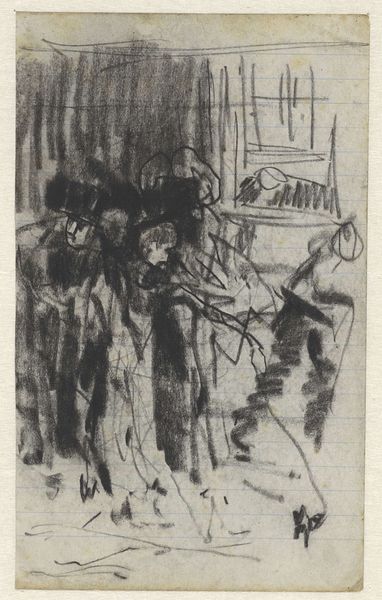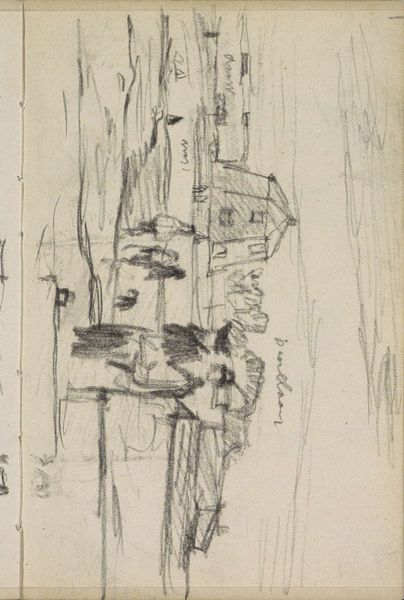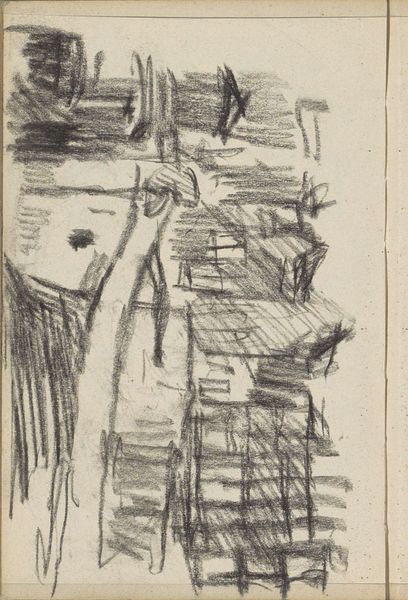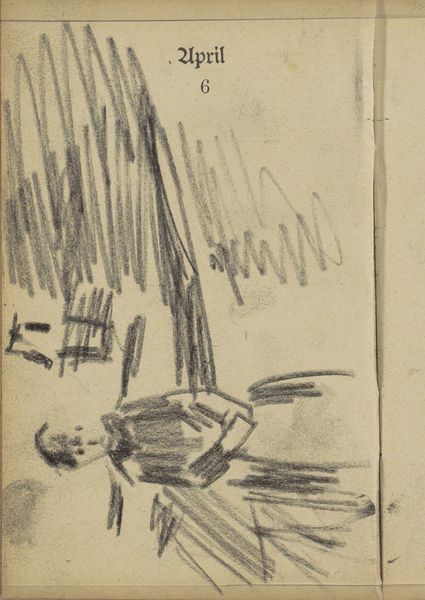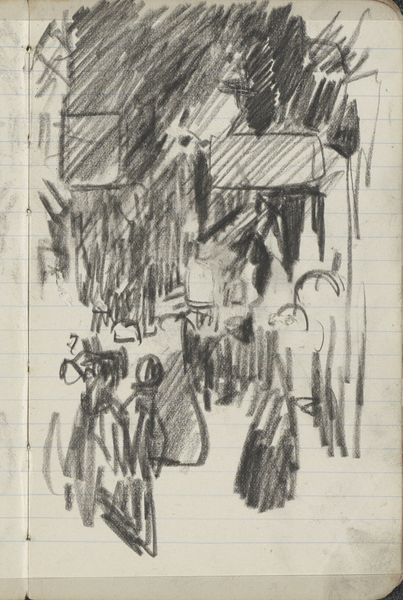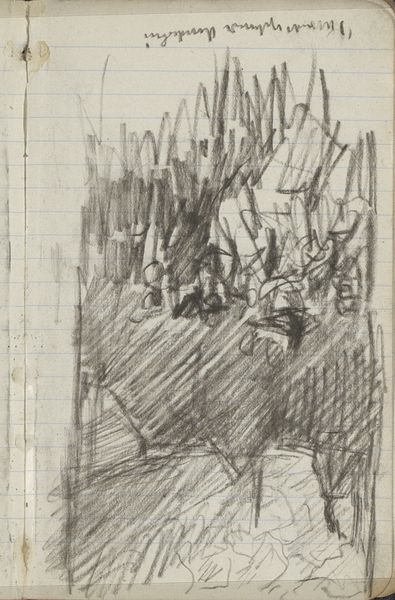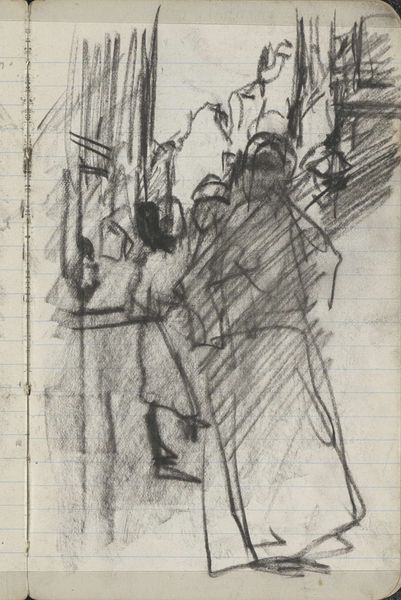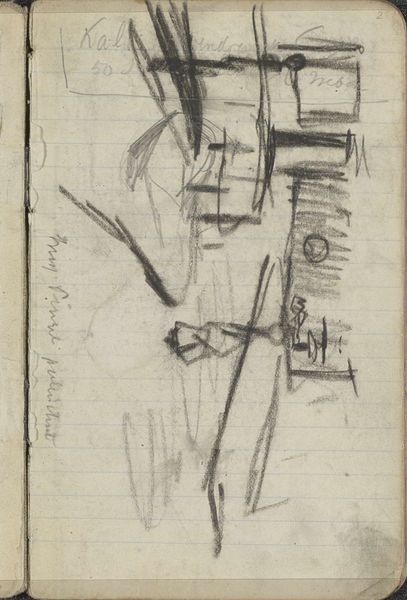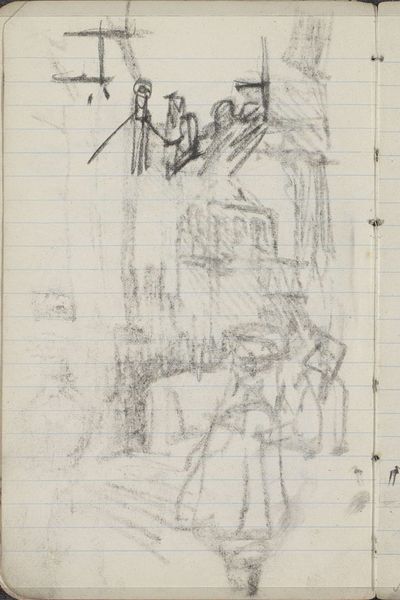
Copyright: Rijks Museum: Open Domain
George Hendrik Breitner made this drawing of a street in Amsterdam with charcoal, likely in the late 19th or early 20th century. Breitner was known for capturing the gritty realities of urban life, and this sketch offers a glimpse into his working process. It’s interesting to consider what institutions and social factors influenced an artist like Breitner. In the Netherlands at this time, there was a growing interest in depicting everyday life and the working class, breaking away from more traditional academic styles. This shift reflected broader social changes, including the rise of industrialization and the growth of cities like Amsterdam. Breitner positioned himself against the traditional art establishment by choosing subjects from the streets. He wasn't interested in idealized or romanticized scenes, and instead, focused on representing the world around him with honesty. Understanding Breitner's place within his cultural and institutional context allows us to appreciate his contribution to Dutch art history. By examining his sketches, paintings, and the social conditions that shaped his work, we gain a richer understanding of art's role in reflecting and challenging the norms of its time.
Comments
No comments
Be the first to comment and join the conversation on the ultimate creative platform.
